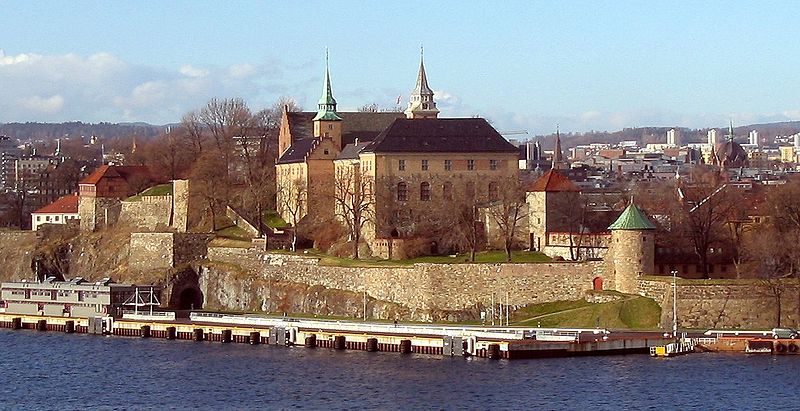Akershus castle
The building of Akershus castle in Oslo was first undertaken by King Haakon V of Norway in the years following 1290. The intention was to replace the castle of Tønsberg, which at that time was the most important castle of Norway alongside with the castle of Båhus. Akershus was constructed in response to earlier attacks on Oslo by the Norwegian nobleman Alv Erlingsson. It was first used in battle in 1308, when it was set under siege by the Swedish Duke Erik of Södermanland who became king of Sweden later that year.
The fortress has survived all attacks and sieges, most of which were attempted by Swedish forces through the years when Norway was under Danish rule. In the early 17th century, the fortress was modernized and remodeled by the Danish King Christian IV. From that time it was transformed into more of a renaissance castle. The immediate proximity of the sea was crucial, as both commerce and military power at that time was closely linked to the sea. Those who wished to rule Norway, needed to rule Akershus. The only time when Akershus has been occupied by foreign forces, was during World War II, when Germany occupied Norway. Norway was occupied by other means than combat with Akershus. Read more here.
The fortress has survived all attacks and sieges, most of which were attempted by Swedish forces through the years when Norway was under Danish rule. In the early 17th century, the fortress was modernized and remodeled by the Danish King Christian IV. From that time it was transformed into more of a renaissance castle. The immediate proximity of the sea was crucial, as both commerce and military power at that time was closely linked to the sea. Those who wished to rule Norway, needed to rule Akershus. The only time when Akershus has been occupied by foreign forces, was during World War II, when Germany occupied Norway. Norway was occupied by other means than combat with Akershus. Read more here.
